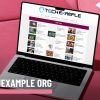There are many painful illnesses that are not life-threatening in particular, and shingles are one of such illnesses. If you have ever had the chickenpox, even when you were a child, then you are at some risk of experiencing the discomfort of shingles. Shingle is an infection of the skin that is caused by the varicella-zoster virus. This is the same virus that causes chickenpox.
What Causes Shingles?
The varicella-zoster virus can remain dormant in a person’s body for years after they have had the chicken pox. The virus attaches itself to the nerve tissues that are located close to your brain and spinal cord. However, not everyone who has once had chicken pox will get shingles.
Although the reasons for the reactivation of this virus is not quite clear, it seems to have to do with a less effective immune system. Research has shown that most older adults who have weaker immune systems tend to get shingles. While some of them might have other health conditions that weaken their immune systems, the general weakening of the immune system as we get older seems to be the primary reason.
Symptoms of Shingles:
The most noticeable symptom of having shingles is a painful rash on the body. This rash is often limited to one small section of the body. Usually, it manifests as a rash that wraps around either the right or left side of the trunk or torso.
Most people find out they have shingles when they visit a dermatologist to find out why they have developed a rash. The rash itself might cause pain, itching, burning or a combination of all three. Sometimes the sensations can become very intense and hard to ignore. The rashes are often sensitive to the touch and produce puss-filled blisters that crack open. When these cracked blisters dry, the skin turns crusty.
Other symptoms of shingles might include a fever, tiredness, headaches and a sensitivity to bright light. Some people might experience an upset stomach and nausea as well.
Treatments for Shingles:
The only way to prevent shingles is with a vaccine, the same kinds that are used to prevent the chickenpox. The most popular and most used are Shingrix and Zostavax. While both of them have been effective, there are a few reasons to be wary of Zostavax. There have been many reports that Zostavax can actually cause chickenpox and shingles in many people, including children. There have also been published warning that this vaccine causes keratitis or inflammation of the cornea.
Antiviral medications are used to slow down the development of the shingles rash. However, it’s important to take these antiviral medications no more than about 72 hours after first experiencing symptoms. This is why a quick diagnosis is imperative. This means telling your doctor about any symptoms as soon as possible.
The pain and inflammation caused by shingles can be managed by over-the-counter pain medications like Ibuprofen, Acetaminophen, and Naproxen. However, if the pain and discomfort are too extreme, your doctor might prescribe pain medications that are more powerful.
Sometimes, numbing medications like Lidocaine might be suggested by a doctor. Other times, Capsaicin cream might be used to reduce irritation and inflammation. It’s important to tell your doctor about any former skin conditions or serious illnesses you have had in the past. This can give your doctor a better idea of what kinds of medications and treatments will suit you best.
Read Also:






















